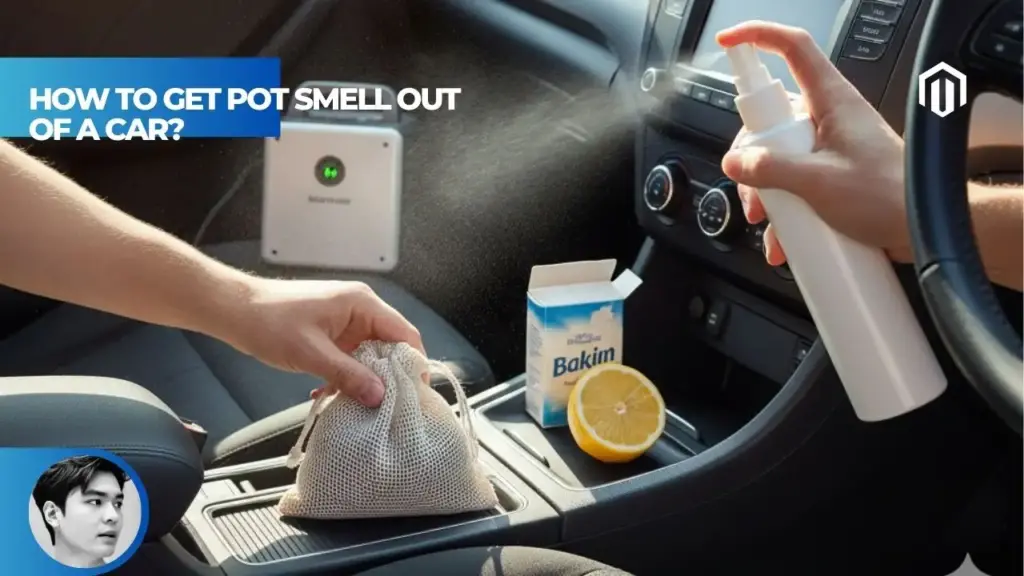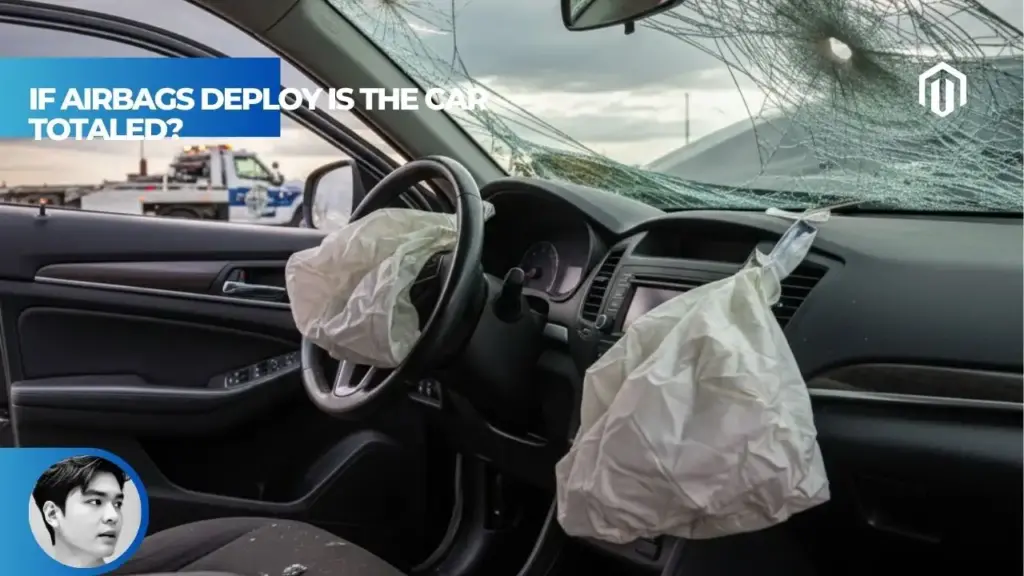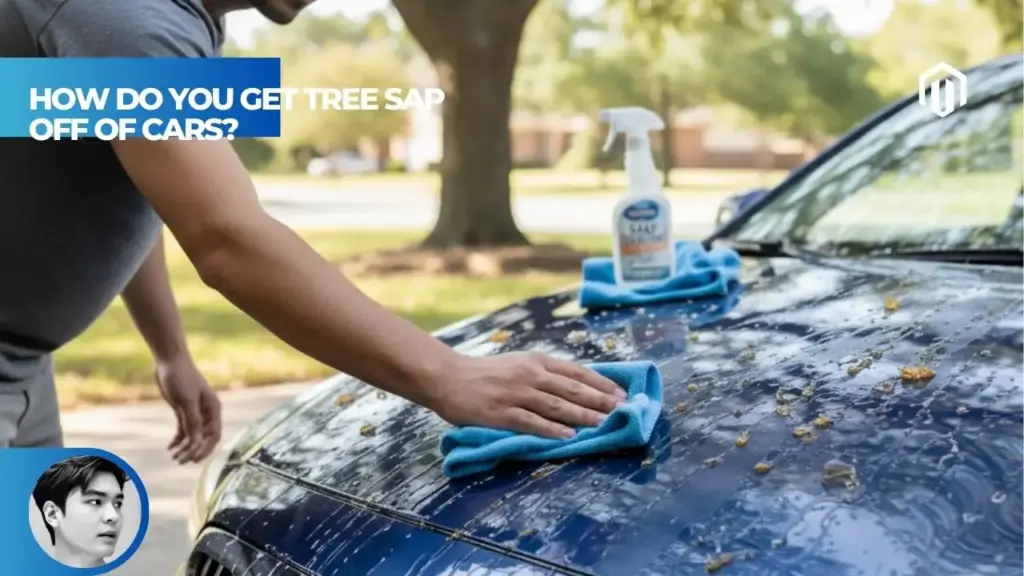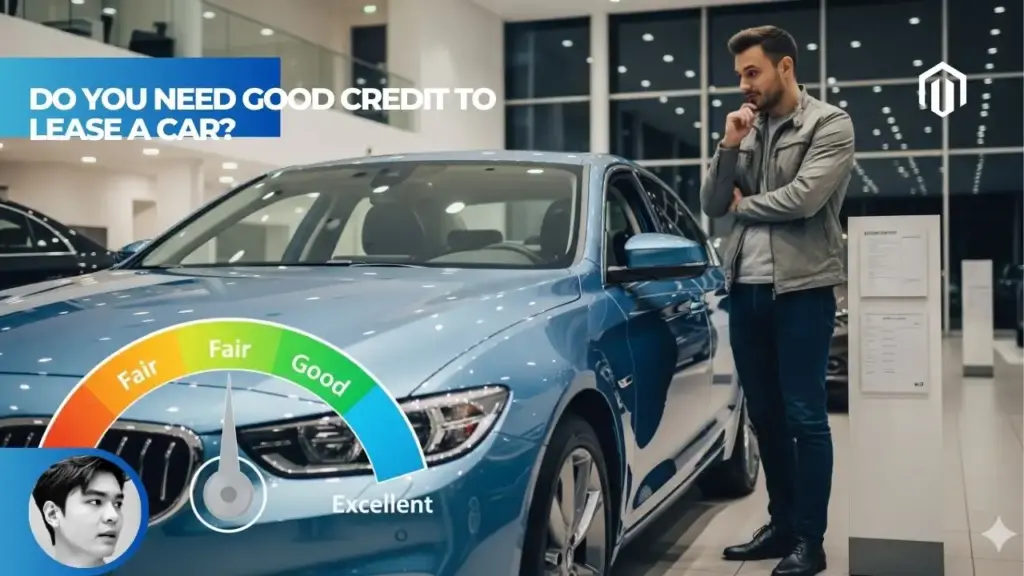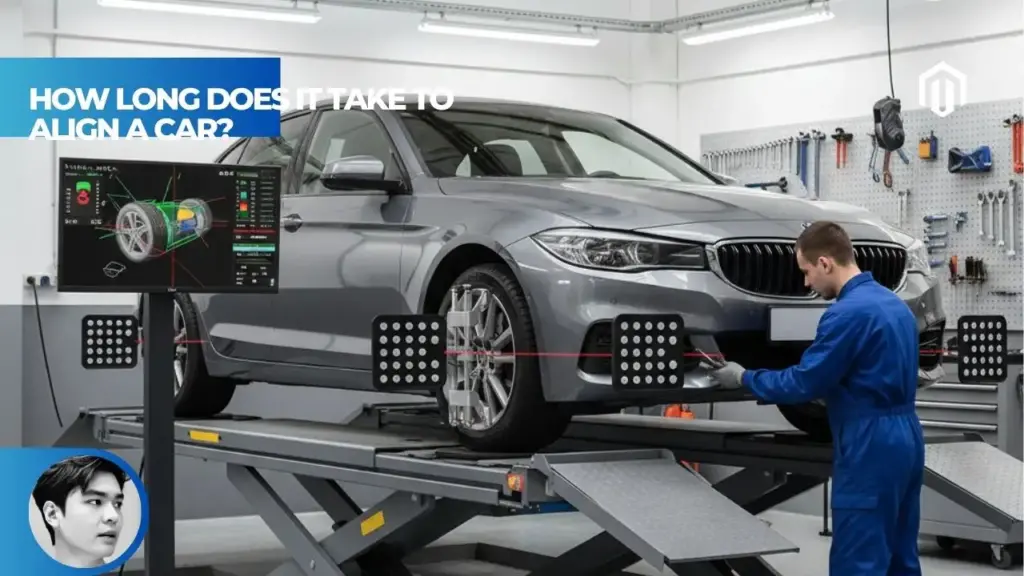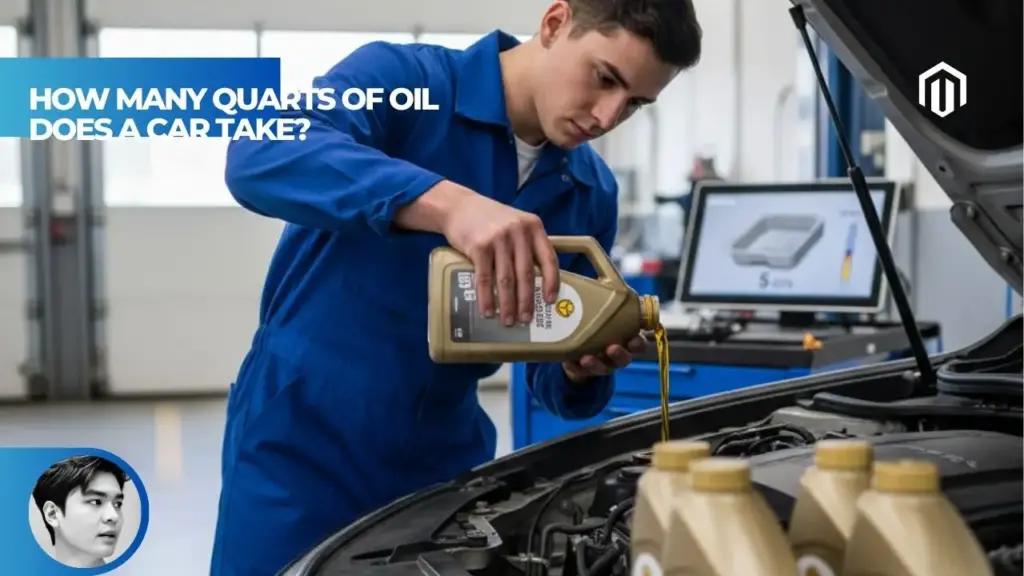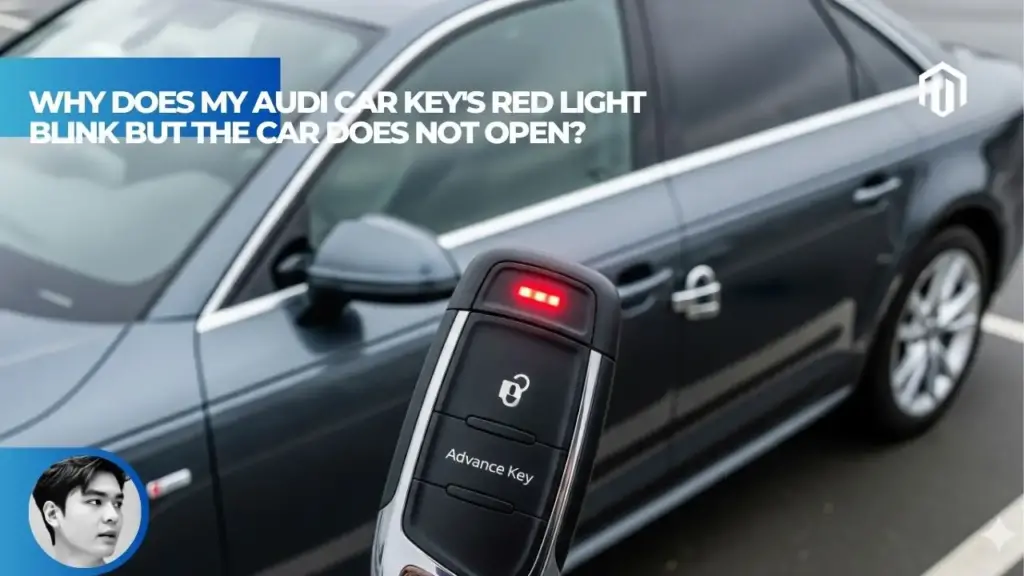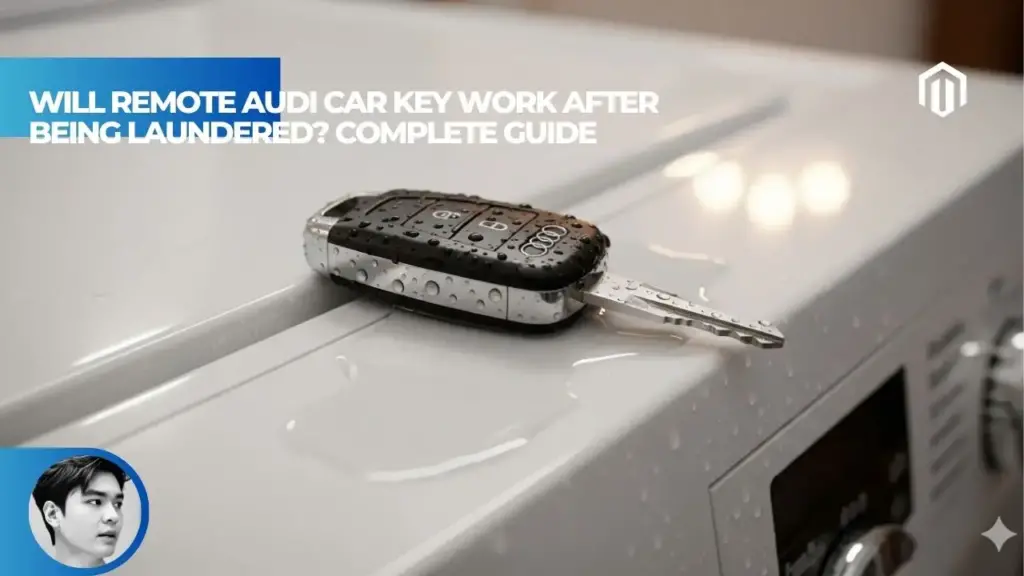You may also like:
- 【Explained】How to Remove the Smell of Smoke in a Car Permanently? A Step-by-Step DIY Guide
- 【Explained】Why Does My Car Smell Like Gas but Isn’t Leaking?
- 【Review】Top 7 Best Ways to Clean a Car After a Body Repair
- 【Explained】How Long Does It Take to Buy a Car? A Step-by-Step Timeline
- 【Explained】How to Get Rid of Ants in Your Car?
To remove pot smell from your car, start with immediate ventilation by opening all windows and doors, then clean all interior surfaces with a vinegar-water solution (1:1 ratio), and apply odor neutralizers like baking soda or Ozium spray. For persistent odors, replace the cabin air filter and consider using an ozone generator as a last resort, which can eliminate up to 99% of organic odors but requires proper safety precautions[1].
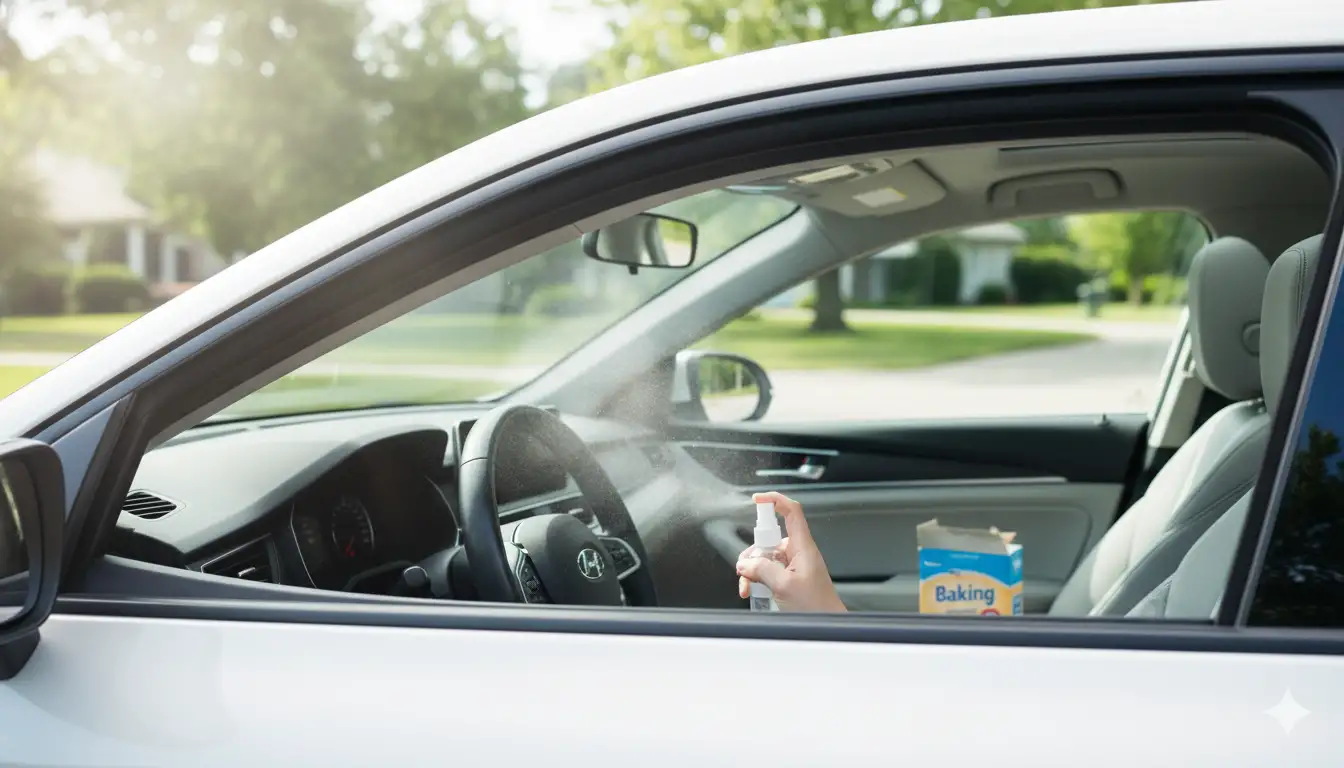
Initial Step – Ventilation and Airing Out
The first and most crucial step in eliminating marijuana odor involves maximizing airflow through your vehicle. Cannabis smoke contains over 100 different terpenes and compounds that create its distinctive smell, and these molecules need to be dispersed before any cleaning begins[2]. According to air quality studies, proper ventilation can reduce airborne odor particles by up to 60% within the first 30 minutes.
Opening Windows and Doors for Air Circulation
Creating cross-ventilation proves most effective for initial odor reduction. Park your vehicle in a safe, well-ventilated area—preferably outdoors—and open all windows and doors simultaneously. This creates a wind tunnel effect that forces stagnant, odor-laden air out while drawing fresh air in.
For maximum effectiveness, position your car perpendicular to the wind direction if possible. This allows natural airflow to sweep through the cabin more efficiently. Leave the vehicle open for at least 2-4 hours during daylight hours when UV rays can help break down odor molecules[3]. If time is limited, even 30 minutes of aggressive ventilation removes the bulk of airborne particles.
Using Car’s Fan System for Odor Removal
Your vehicle’s HVAC system can accelerate the ventilation process when used correctly. Start the engine and set the climate control to fresh air mode (not recirculate), then run the fan at maximum speed. This forces air through the cabin and out the open windows, creating positive pressure that expels odor molecules.
Optimal fan settings for odor removal:
- Set temperature to neutral (neither heating nor cooling)
- Select “fresh air” intake mode
- Turn fan to highest setting
- Direct vents toward windows
- Run for 15-20 minute intervals
According to Autvex automotive specialists, running the AC on recirculate mode initially can trap odors in the system, making the problem worse. Always use fresh air mode during the initial ventilation phase to prevent contaminating the HVAC system further.
Deep Cleaning Interior Car Surfaces
After ventilation reduces airborne particles, focus shifts to removing odor molecules absorbed by interior surfaces. Fabric and porous materials can trap cannabis smoke for weeks, continuously releasing smell back into the cabin[4]. A systematic deep cleaning approach ensures complete odor elimination rather than temporary masking.
Interior Car Cleaning Solutions
Selecting the right cleaning solution makes the difference between masking odors and eliminating them. Chemical reactions between cleaning agents and odor molecules break down the compounds causing the smell, rather than simply covering them up.
Vinegar and Water for Car Cleaning
White vinegar’s acetic acid neutralizes alkaline odor compounds found in marijuana smoke, making it highly effective for odor elimination. Mix equal parts white vinegar and water in a spray bottle for an economical solution that costs under $5 and rivals commercial products[5].
Vinegar cleaning mixture recipe:
- 2 cups white vinegar (5% acidity)
- 2 cups warm water
- 10 drops essential oil (optional, for scent)
- 1 tablespoon dish soap (for greasy residue)
The vinegar smell dissipates within 2-3 hours, taking marijuana odors with it. For sensitive noses, add lemon juice to the mixture, which provides additional deodorizing properties through citric acid while leaving a fresh scent.
Wipe Down Car Interior Methods
Systematic surface cleaning prevents missing hidden odor sources. Start from the ceiling and work downward, as smoke rises and deposits heaviest on upper surfaces. Use microfiber cloths that trap particles rather than spreading them around.
Surface cleaning sequence:
- Headliner: Gently blot (don’t rub) to avoid damage
- Windows: Clean inside thoroughly, smoke film blocks visibility
- Dashboard: Pay attention to vents and crevices
- Door panels: Include handles and pockets
- Center console: Remove items and clean storage areas
- Steering wheel: Often overlooked but heavily contaminated
- Seat belts: Extend fully and wipe entire length
Change cleaning cloths frequently to avoid recontaminating cleaned surfaces. Professional detailers recommend using at least 8-10 microfiber cloths for a thorough interior wipe-down.
Car Upholstery Cleaning
Fabric surfaces absorb and retain odors more than any other interior component. The porous nature of upholstery fibers creates thousands of tiny pockets where smoke particles settle and embed themselves deeply.
Fabric Seat Cleaner Application
Commercial fabric cleaners designed for automotive use contain enzymes that break down organic compounds in smoke. Apply cleaner liberally to ensure penetration into fabric fibers where odor molecules hide.
Professional fabric cleaning technique:
- Vacuum thoroughly to remove loose particles
- Spray cleaner evenly across fabric surface
- Agitate with soft brush in circular motions
- Let dwell for 5-10 minutes
- Extract with wet/dry vacuum or absorb with towels
- Repeat if necessary for heavy contamination
- Allow to dry completely with windows open
For budget-conscious solutions, mix 2 cups warm water with 1 tablespoon dish soap and 1 tablespoon baking soda. This DIY cleaner costs about $0.50 per application versus $10-15 for commercial products.
Cleaning Cloth Seats from Weed Smell
Cloth seats require special attention as they trap odors more persistently than leather or vinyl. The average cloth car seat contains 3-5 square yards of fabric, providing extensive surface area for odor absorption[6].
Start by removing seat covers if possible for separate washing. For fixed upholstery, use a steam cleaner if available—the high temperature (212°F) helps volatilize and remove embedded odor molecules. Rental units cost $30-40 per day at most hardware stores, making this an economical option for thorough cleaning.
Leather Car Seat Cleaning
Leather requires gentler treatment than fabric but still absorbs odors, especially in perforated designs common in luxury vehicles like BMW 3 Series or Audi A4 models. Use pH-balanced leather cleaners to avoid damage while eliminating odors.
Leather cleaning process:
- Vacuum crevices and perforations first
- Apply leather cleaner with microfiber cloth
- Work in small sections using gentle circular motions
- Wipe with damp cloth to remove residue
- Apply leather conditioner after drying
- Allow 24 hours before use
Never use vinegar directly on leather as acid can cause discoloration and cracking. Commercial leather cleaners cost $15-25 but protect your investment in expensive upholstery.
Cleaning Carpets in Car
Vehicle carpeting acts like a sponge for odors, with fibers extending deep into padding underneath. The average car contains 20-30 square feet of carpeting that requires thorough treatment[6].
Deep carpet cleaning method:
- Remove floor mats for separate cleaning
- Vacuum thoroughly including under seats
- Apply carpet shampoo or baking soda paste
- Scrub with stiff brush to work into fibers
- Extract moisture with wet/dry vacuum
- Place fans to accelerate drying
- Repeat treatment if odor persists
For persistent odors, consider professional detailing services that use hot water extraction equipment reaching deeper into carpet padding.
Targeted Cleaning for Odor Sources
Certain areas of your vehicle trap and recirculate odors more than others. These hidden sources can continue releasing marijuana smell for weeks if not properly addressed.
Cleaning Car Air Vents
Air vents act as distribution channels for odors throughout your vehicle. Smoke particles settle inside vent tubes and on louver surfaces, releasing smell every time you use the climate control system. Studies show that up to 30% of cabin odors originate from contaminated HVAC systems[7].
Vent cleaning procedure:
- Remove vent covers if possible (some pop out easily)
- Vacuum inside ducts with crevice tool attachment
- Spray foam cleaner designed for HVAC systems
- Use vent brush to scrub accessible areas
- Wipe louvers with microfiber cloth and cleaner
- Run fan on high to dry system
Professional HVAC cleaning foam costs $10-15 and expands to reach deep into inaccessible ductwork. The foam breaks down after 10 minutes, carrying contaminants out when you run the fan.
Dryer Sheets in Car Vents
Dryer sheets provide a quick temporary fix while deep cleaning takes effect. The fabric softener chemicals in dryer sheets help neutralize some odor molecules while adding a fresh scent.
Dryer sheet placement technique:
- Clip sheets behind vent louvers
- Replace every 3-5 days for best results
- Use unscented for sensitive individuals
- Combine with other methods for effectiveness
While not a permanent solution, this $5 trick helps during the odor elimination process, especially when transporting passengers who might notice lingering smells.
Replacing Cabin Air Filter
The cabin air filter traps airborne particles before they enter your vehicle’s interior. A contaminated filter continuously recirculates marijuana odor throughout the cabin. According to filter manufacturers, a single contaminated filter can harbor odors for 3-6 months even after the source is removed[8].
Most cabin filters are located behind the glove box or under the dashboard and can be replaced in 10-15 minutes. Replacement filters cost $15-40 depending on your vehicle model. Premium activated carbon filters provide superior odor absorption compared to standard paper filters.
Filter replacement steps:
- Locate filter housing (check owner’s manual)
- Remove glove box or access panel
- Note airflow direction arrow on old filter
- Remove contaminated filter in sealed bag
- Clean filter housing with vacuum
- Install new filter matching arrow direction
- Reassemble components
According to Autvex maintenance data, vehicles in urban areas or those frequently exposed to smoke should replace cabin filters every 12,000 miles versus the standard 15,000-20,000 mile interval.
Cleaning Car Headliner
The headliner (ceiling fabric) collects smoke as it rises, making it a critical but often overlooked cleaning target. Aggressive cleaning can damage the adhesive holding headliner fabric, requiring careful technique.
Safe headliner cleaning method:
- Use minimal moisture to prevent sagging
- Blot gently rather than rubbing
- Work in small sections
- Use foam cleaner that doesn’t oversaturate
- Allow complete drying before closing windows
- Consider professional cleaning for valuable vehicles
Headliner replacement costs $200-500 if damaged during cleaning, making gentle treatment essential. Test cleaners in an inconspicuous area first.
Odor Neutralization Methods
After thorough cleaning removes the source, neutralizing remaining odor molecules ensures complete elimination. These methods attack odors at the molecular level rather than simply masking them.
Chemical Odor Removal Products
Modern odor eliminators use various chemical reactions to neutralize smell molecules. Understanding how each works helps select the most effective product for your situation.
Ozium Spray for Weed Smell
Ozium has become the industry standard for marijuana odor elimination, originally designed for hospital sanitization. It works through glycol-ized action that clings to airborne particles and neutralizes them on contact. Tests show Ozium reduces airborne bacteria by 99.9% while eliminating associated odors[9].
Proper Ozium application:
- Close all windows and doors
- Spray for 1-2 seconds in center of vehicle
- Exit immediately and close doors
- Wait 20-30 minutes for product to work
- Ventilate thoroughly before re-entering
- Repeat if necessary for strong odors
Safety warning: Ozium contains chemicals that can irritate lungs if inhaled directly. Never remain in vehicle during application and ensure complete ventilation before driving. A 3.5oz can costs $5-8 and treats a vehicle 10-15 times.
Car Odor Bomb Application
Total-release odor bombs flood your vehicle interior with neutralizing agents, reaching every surface simultaneously. These one-time-use products cost $10-20 but provide comprehensive treatment for severe contamination.
Odor bomb procedure:
- Clean interior thoroughly first
- Start vehicle and run AC on recirculate
- Activate bomb and place in center of vehicle
- Exit quickly and close all doors
- Let run for 2-3 hours
- Ventilate completely before use
Professional-grade bombs like those from Dakota eliminate odors that surface cleaning alone cannot reach. Choose products specifically designed for smoke rather than general fresheners.
Automotive Odor Neutralizer Options
Various neutralizer technologies target different aspects of odor elimination:
| Product Type | Active Ingredient | Cost | Effectiveness | Duration |
|---|---|---|---|---|
| Enzyme sprays | Biological enzymes | $15-25 | High for organics | Permanent |
| Chlorine dioxide | CLO2 gas | $20-30 | Very high | Permanent |
| Hydroxyl generators | OH radicals | $200-500 | Excellent | Permanent |
| Activated oxygen | O3 (ozone) | $50-300 | Highest | Permanent |
| Zeolite packets | Natural mineral | $20-40 | Moderate | 30-60 days |
Natural Odor Absorbers
Natural solutions provide safe, economical alternatives to chemical products. While generally slower acting, they avoid introducing additional chemicals into your vehicle environment.
Baking Soda for Car Smell
Sodium bicarbonate (baking soda) neutralizes both acidic and basic odor compounds through chemical absorption. Research indicates baking soda can absorb up to 3 times its weight in odor molecules[10].
Baking soda application methods:
- Sprinkle liberally on carpets and seats
- Leave overnight or up to 72 hours
- Vacuum thoroughly to remove residue
- Repeat weekly until odor eliminated
For enhanced effectiveness, mix 1 cup baking soda with 10 drops essential oil before application. This combination costs under $3 and rivals commercial products. Place open boxes under seats for continuous absorption between treatments.
Activated Charcoal Bags
Activated charcoal’s porous structure provides massive surface area—one gram has the surface area of a football field—for trapping odor molecules. Unlike air fresheners, charcoal actually removes odors rather than masking them[11].
Charcoal placement strategy:
- Use 200-500g total for average sedan
- Place bags under seats and in trunk
- Position near air vents for circulation
- Replace or reactivate monthly
- Combine with other methods for best results
Quality activated charcoal bags cost $15-25 for a set of 4-6 and last 1-2 years with monthly reactivation in sunlight. The UV rays release trapped molecules, refreshing absorption capacity.
Coffee Grounds for Car Smell
Fresh coffee grounds contain nitrogen, which helps neutralize airborne odors while adding a pleasant aroma. The oils in coffee also help trap some volatile organic compounds found in smoke.
Coffee ground application:
- Use fresh, dry grounds only
- Place in breathable containers (pantyhose work well)
- Position throughout vehicle
- Replace every 2-3 days
- Vacuum any spills immediately
While less effective than charcoal or baking soda, coffee grounds cost virtually nothing if you’re already a coffee drinker. They work best as a supplementary method rather than primary treatment.
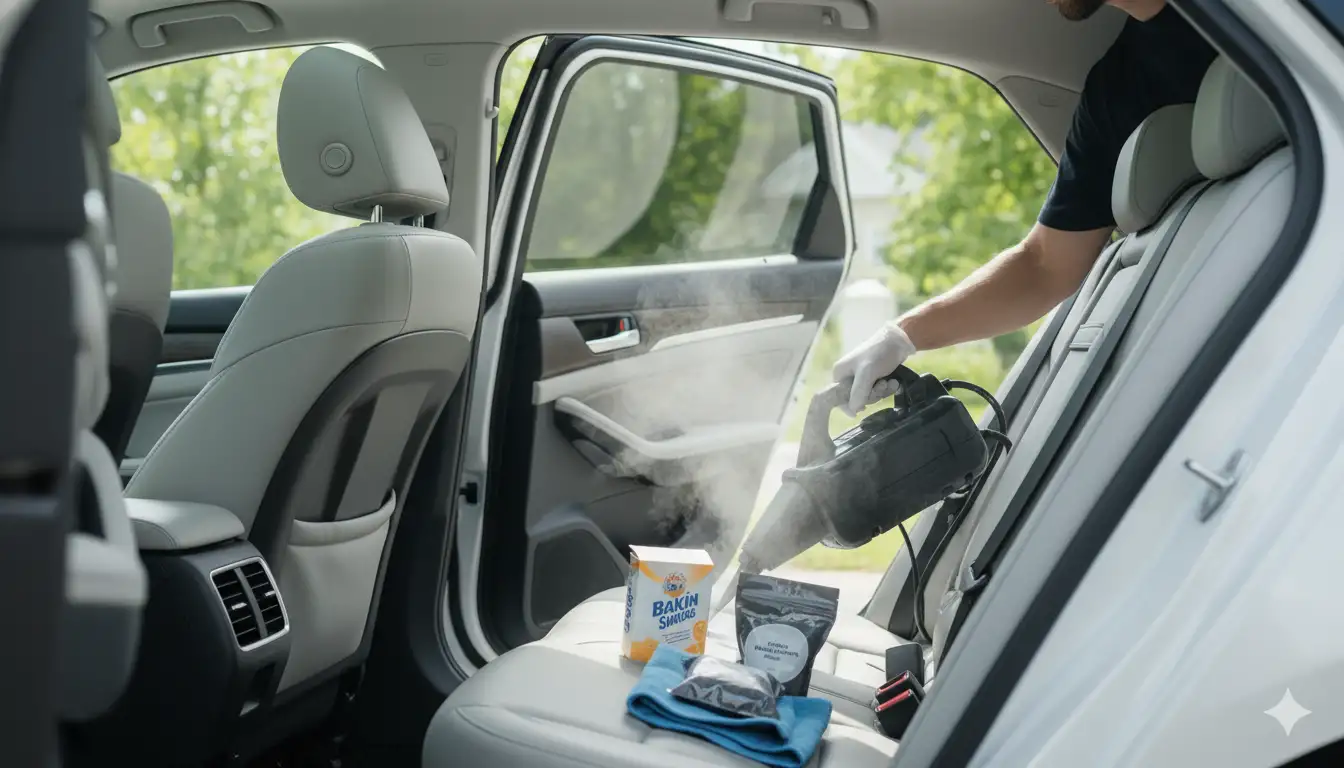
Speed and Emergency Solutions
Sometimes you need immediate results—whether for an unexpected passenger, vehicle inspection, or urgent sale. These rapid solutions provide quick relief though may require follow-up for permanent elimination.
Get Weed Smell Out of Car Fast
When time is critical, combine multiple approaches simultaneously for maximum speed. Professional detailers use this “shock treatment” approach for emergency situations.
30-minute emergency protocol:
- Ventilate aggressively with all windows/doors open (5 minutes)
- Spray Ozium throughout interior (30 seconds)
- Exit and wait while Ozium works (10 minutes)
- Wipe all surfaces with vinegar solution (10 minutes)
- Place dryer sheets in vents (1 minute)
- Spray fabric refresher on seats/carpets (2 minutes)
- Run AC on high with windows cracked (5 minutes)
This emergency treatment reduces odor by approximately 70-80% within 30 minutes[3]. Follow up with thorough cleaning when time permits for complete elimination.
How to Get Rid of Hotbox Smell
Hotboxing—smoking in a completely closed vehicle—creates extreme contamination requiring aggressive treatment. The concentrated smoke penetrates deeper into materials than normal exposure.
Hotbox recovery plan:
- Immediate ventilation for minimum 4 hours
- Steam clean all fabrics if possible
- Replace cabin air filter immediately
- Use ozone generator for 2-3 hours
- Deep clean with enzyme cleaners
- Multiple baking soda treatments
- Professional detail if smell persists
Hotbox situations may require 3-7 days of repeated treatments for complete odor elimination. The concentrated exposure can penetrate deep into foam cushions and insulation.
Remove Pot Smell from Car Quickly
For moderate contamination, this 2-hour comprehensive approach balances speed with effectiveness:
Rapid elimination sequence:
| Time | Action | Purpose |
|---|---|---|
| 0-15 min | Open all openings, run fan | Initial ventilation |
| 15-30 min | Apply baking soda to fabrics | Begin absorption |
| 30-45 min | Clean all hard surfaces | Remove residue |
| 45-60 min | Treat vents and replace filter | Stop recirculation |
| 60-75 min | Vacuum baking soda | Remove absorbed odors |
| 75-90 min | Apply Ozium treatment | Neutralize remaining |
| 90-120 min | Final ventilation | Clear chemicals |
This systematic approach achieves 85-90% odor reduction in 2 hours for typical contamination levels.
Emergency Car Deodorizing
When professional products aren’t available, household items provide emergency deodorizing:
Household emergency kit:
- White vinegar (neutralizer)
- Dish soap (degreaser)
- Rubbing alcohol (disinfectant)
- Paper towels (absorption)
- Vanilla extract (masking)
- Fabric softener (freshener)
Mix 2 cups water, 1/2 cup vinegar, 1/4 cup rubbing alcohol, and 1 tablespoon dish soap for an emergency cleaning solution. While not as effective as commercial products, this mixture costs under $2 and provides immediate improvement.
Advanced Treatments for Persistent Smells
When standard methods fail, advanced treatments become necessary. These professional-level approaches tackle deeply embedded odors that resist conventional cleaning.
Ozone Generator for Cars
Ozone (O3) generators create unstable oxygen molecules that attach to and destroy odor-causing compounds. This oxidation process eliminates rather than masks odors, achieving up to 99% reduction in organic smells[12].
Safe ozone treatment procedure:
- Clean vehicle thoroughly first
- Remove all living things including plants
- Place generator in center of vehicle
- Seal all openings to contain ozone
- Run for 30-120 minutes based on severity
- Ventilate completely for 30+ minutes
- Air out additional hour before driving
Critical safety warnings:
- Never operate with people or pets present
- Ozone irritates lungs and mucous membranes
- Can damage rubber seals if overused
- May fade certain fabrics and plastics
- Requires proper ventilation after treatment
Consumer ozone generators cost $50-150 to purchase or $30-50 per day to rent. Professional-grade units used by detailers cost $300-1,500 but provide more control and safety features.
Detailing for Odor Removal
Professional detailing services employ industrial equipment and techniques unavailable to consumers. Their systematic approach ensures complete odor elimination rather than temporary masking.
Professional detail process:
- Interior disassembly of removable components
- Hot water extraction of all fabrics
- Steam cleaning of hard surfaces
- HVAC system treatment with specialized equipment
- Ozone or hydroxyl treatment
- Sealant application to prevent re-absorption
- Quality inspection with odor detection equipment
Professional odor removal detailing costs $150-500 depending on vehicle size and contamination level. For valuable vehicles or severe cases, this investment ensures complete elimination without risk of damage from DIY attempts.
Auto Detailing Products
Professional-grade products significantly outperform consumer alternatives. Understanding what professionals use helps select appropriate products for DIY efforts.
Professional product categories:
| Product Type | Professional Brand Examples | Cost Range | Consumer Alternative |
|---|---|---|---|
| Enzyme cleaners | P&S Double Black, 3D | $30-50/gal | Nature’s Miracle |
| Extraction shampoo | Chemical Guys, Griot’s | $25-40/gal | Bissell formula |
| Odor neutralizers | Auto Shocker, Ozium Pro | $40-80/kit | Regular Ozium |
| Steam cleaner | McCulloch, Dupray | $200-800 | Rental units |
| Ozone generator | Enerzen, OdorFree | $300-1500 | Rental units |
Autvex recommends investing in professional products for severe cases or valuable vehicles. The higher initial cost provides better results and prevents damage from repeated treatments with inferior products.
Natural Remedies and Alternatives
For those preferring chemical-free solutions or dealing with mild contamination, natural remedies offer safe, sustainable options. While generally requiring more time and repetition, these methods avoid introducing synthetic chemicals into your vehicle.
Essential Oil Diffuser for Car
Essential oils provide natural antimicrobial and deodorizing properties while adding pleasant fragrances. Certain oils specifically combat smoke-related odors through their molecular structure.
Effective essential oils for smoke odor:
- Tea tree: Antimicrobial properties destroy odor-causing bacteria
- Eucalyptus: Opens airways and neutralizes smoke residue
- Lavender: Calming scent that masks remaining odors
- Lemon: Citrus compounds break down smoke molecules
- Peppermint: Strong scent overwhelms trace odors
Car diffusers cost $10-30 and plug into power outlets or clip to vents. Add 5-10 drops of oil mixed with water for continuous freshening. Replace weekly for best results.
Natural Odor Absorbers
Beyond baking soda and charcoal, several natural materials effectively absorb vehicle odors:
Natural absorption materials:
- White vinegar in open containers (replace daily)
- Cat litter (clay type) in breathable bags
- Newspaper crumpled throughout vehicle
- Cedar chips in sachets under seats
- Bamboo charcoal bags near air vents
- Zeolite crystals in mesh bags
These materials cost $5-20 total and provide ongoing absorption for 30-60 days. Combine multiple absorbers for enhanced effectiveness, especially in larger vehicles.
For comprehensive interior maintenance beyond odor removal, consider window tinting to reduce UV damage that can worsen embedded odors.
Preventative Measures
Preventing future contamination proves easier than elimination. These strategies minimize odor absorption if exposure cannot be completely avoided.
How to Prevent Weed Smell in Car
Prevention strategies focus on containing smoke before it permeates interior materials. Simple changes in behavior and equipment dramatically reduce contamination.
Prevention techniques:
- Never smoke with windows closed
- Use portable air purifiers while driving
- Install cabin air filters with activated carbon
- Apply fabric protection sprays to upholstery
- Keep windows cracked for constant ventilation
- Use seat covers that can be washed
- Store materials in sealed containers
Fabric protection sprays ($15-25) create barriers that prevent deep odor penetration. Reapply every 3-6 months for continued protection.
Smoke Control in Car
Managing smoke exposure when it cannot be avoided requires active containment strategies:
Smoke management tools:
- Portable ashtrays with lids ($10-20)
- Smoke buddy filters for exhaled smoke ($20-30)
- HEPA air purifiers for vehicles ($50-150)
- Activated carbon vent filters ($20-40)
- Ozone air fresheners for maintenance ($30-60)
Creating negative pressure by cracking rear windows while front windows remain closed helps pull smoke out rather than allowing it to settle on surfaces. This aerodynamic principle reduces interior contamination by up to 50%[13].
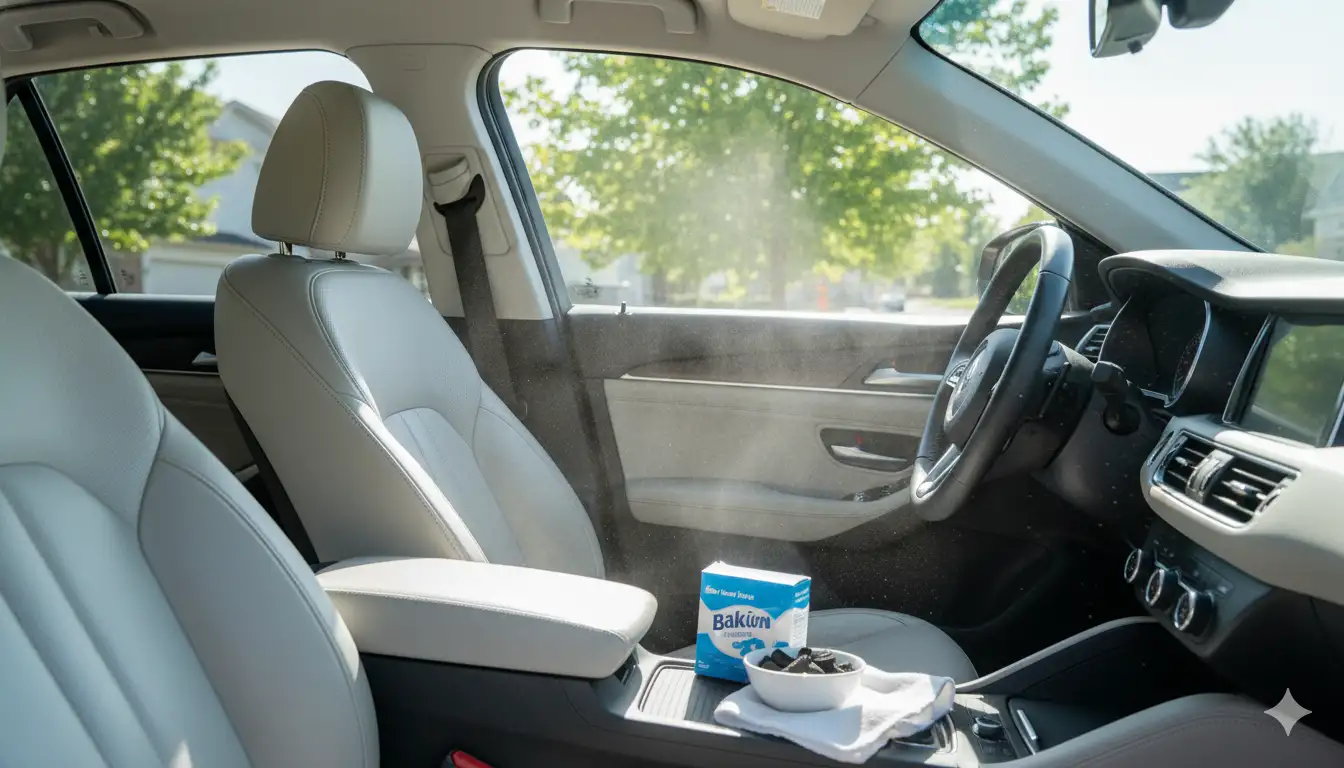
Key Takeaway
To eliminate pot smell from your car effectively, combine immediate ventilation with systematic cleaning of all interior surfaces using vinegar solution or specialized cleaners, followed by odor neutralization through baking soda, activated charcoal, or Ozium spray application. For severe contamination, ozone treatment provides the most thorough elimination, removing up to 99% of organic odors, though it requires strict safety protocols and complete ventilation before vehicle use[12].
Next Steps
Begin immediately with aggressive ventilation—open all windows and doors for at least 30 minutes while gathering cleaning supplies. Progress through systematic surface cleaning with vinegar solution, focusing on fabric surfaces that trap odors most persistently. Apply baking soda overnight to carpets and seats, then vacuum thoroughly before using chemical neutralizers like Ozium for remaining airborne particles. If odor persists after 48 hours of DIY treatment, invest in professional detailing or ozone generator rental to ensure complete elimination, especially if facing legal concerns or vehicle sale situations.
FAQs
What is the fastest way to get weed smell out of a car?
Open all windows for immediate ventilation, spray Ozium throughout the interior, wait 20 minutes outside the vehicle, then wipe all surfaces with vinegar solution for 70-80% odor reduction within 30 minutes[3]. Follow with baking soda treatment overnight for complete elimination.
Does Ozium spray work on weed smell?
Yes, Ozium effectively eliminates marijuana odors through glycol-ized action that neutralizes airborne particles on contact, achieving 99.9% reduction in odor-causing bacteria[9]. However, proper ventilation after use is essential as the chemicals can irritate lungs if inhaled directly.
How do you get the smell out of your car vents?
Spray foam HVAC cleaner into air intake vents, replace the cabin air filter immediately, insert dryer sheets as temporary measures, and run the AC on fresh air mode for 15-20 minutes to clear the system[7]. Professional vent cleaning may be necessary for severe contamination.
Does baking soda get rid of the pot smell in a car?
Yes, baking soda effectively absorbs marijuana odors by neutralizing both acidic and basic compounds, capable of absorbing up to 3 times its weight in odor molecules[10]. Sprinkle liberally on all fabric surfaces, leave for 2-72 hours, then vacuum thoroughly for best results.
How long does weed smell stay in a car?
Without treatment, marijuana smell typically lingers 3-7 days in well-ventilated conditions but can persist for weeks in closed environments where smoke particles embed in fabrics and ventilation systems[2]. Hot weather accelerates dissipation while cold weather extends duration.
Can an ozone generator get rid of pot smell?
Yes, ozone generators effectively eliminate pot smell through oxidation that destroys odor molecules at the source, achieving up to 99% reduction in organic odors[12]. However, strict safety protocols are essential—never operate with people or pets present and ventilate thoroughly for 30+ minutes after treatment.
What is the best product for removing smoke smell from a car?
Ozium spray, activated charcoal bags, and enzyme-based odor eliminators rank as top products for smoke removal, with professional ozone treatment providing the most thorough but requiring safety precautions[9]. Costs range from $5 for Ozium to $50-150 for ozone generator rental.
How do you get weed smell out of cloth seats?
Apply enzyme-based fabric cleaner or vinegar solution to cloth seats, agitate with soft brush, allow 5-10 minutes dwell time, extract with wet/dry vacuum, then sprinkle baking soda overnight before final vacuuming[6]. Steam cleaning provides deepest penetration for severe contamination.
References
- Fresh Layer. (2025). Ozone Generators in Car Detailing: What You Need to Know. Retrieved from https://www.fresh-layer.com/blog/ozone-generators-in-car-detailing-what-you-need-to-know
- My Florida Green. (2025). How to Get Rid of the Weed Smell: Try these 7 Best Ways. Retrieved from https://myfloridagreen.com/blog/how-to-get-rid-of-the-weed-smell/
- WikiHow. (2024). How to Get Rid of Weed Smell: 9 Simple Methods. Retrieved from https://www.wikihow.com/Get-Weed-Smell-Out-of-Car
- Mongo Life. (2024). How to Get Weed Smell Out of a Car: Top Methods. Retrieved from https://mongolife.com/blogs/news/how-to-get-weed-smell-out-of-a-car-top-methods
- Biozone Scientific. (2024). Effective Methods to Remove Cannabis Odor & Smells. Retrieved from https://biozonescientific.com/how-to-get-rid-of-the-smell-of-cannabis-aka-marijuana-from-hotel-rooms/
- Simi Valley Chrysler. (2025). How to Remove Weed Smell from Your Car. Retrieved from https://www.simivalleychryslerdodgejeepram.com/blogs/5737/how-to-remove-weed-smell-from-your-car-effective-strategies-for-fresh-air
- My Marijuana Cards. (2023). How Do I Get the Weed Smell Out of A Car Vent? Retrieved from https://www.mymarijuanacards.com/how-to-get-weed-smell-out-of-car-vent/
- Detail King. (2025). How to Use an Ozone Generator for Car Detailing. Retrieved from https://blog.detailking.com/guide-ozone-generators-for-car-detailing/
- Lucky Chuckie. (2023). Ozium Spray Weed. Retrieved from http://www.luckychuckie.com/weed-dc-blog/ozium-spray-weed
- Labroots. (2022). How To Eliminate the Smell of Cannabis. Retrieved from https://www.labroots.com/trending/cannabis-sciences/23371/eliminate-smell-cannabis
- InhaleMD. (2023). How to Eliminate the Smell of Marijuana. Retrieved from https://inhalemd.com/blog/how-to-eliminate-the-smell-of-marijuana/
- EPA. (2025). Ozone Generators that are Sold as Air Cleaners. Retrieved from https://www.epa.gov/indoor-air-quality-iaq/ozone-generators-are-sold-air-cleaners
- Mel Magazine. (2021). How to Get Rid of Weed Smell in a Car: A Stoner’s Guide. Retrieved from https://melmagazine.com/en-us/story/how-to-get-rid-of-weed-smell-in-a-car

I am a senior automotive analyst at Autvex. Expert vehicle evaluations, in-depth reviews, and objective analysis helping readers make informed automotive decisions with years of industry experience.

